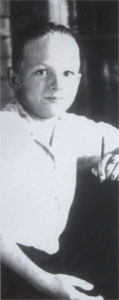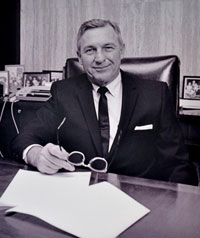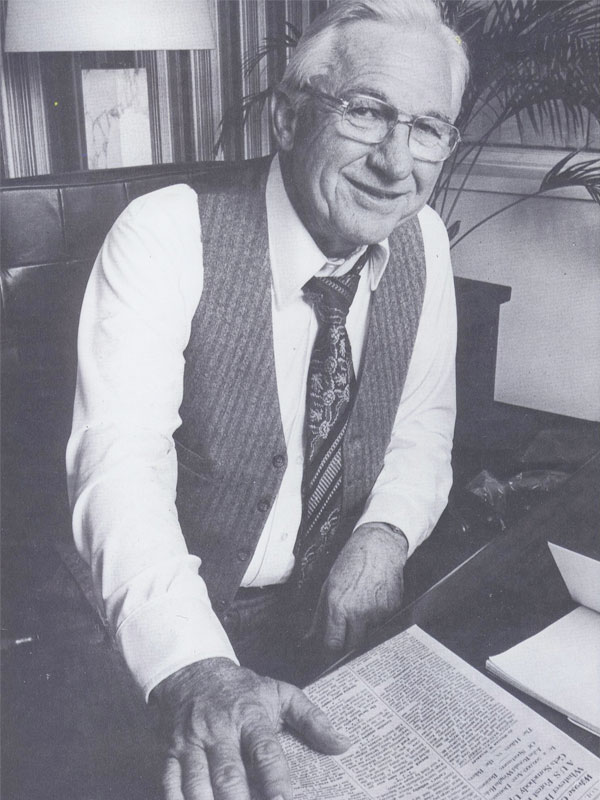
Morris Hite was born in Oklahoma in 1910.
His grandparents taught him to work hard and value both formal and informal education. Even as a youth, Hite was a motivated and talented salesman, selling his family’s milk and home-grown fruit door to door. He left home at 15 to work as a cartoonist in a work-study program sponsored by Eugene Arnett. During this period he studied issues of Printer’s Ink magazine and decided he wanted a career in advertising.
Early Life
In 1927, he landed his first job in advertising and promotions: He became a movie promoter with Griffith Amusement. He sold tickets, passed out handbills, collected merchandise to be given away and even arranged a publicity stunt or two. From this beginning, he worked for several other advertising agencies until starting his own agency at age 19.
Hite moved to Dallas and joined the Tracy-Locke-Dawson agency in 1937. He brought in new clients and helped existing clients grow their businesses. By the early 1940s, Hite had earned the No. 2 spot in the Dallas office. In 1942, he left to serve his country.
After serving in the U.S. Army in World War II, Hite rejoined Tracy-Locke. Wartime economic had weakened the agency, so his first priority was to reestablish relationships with his former clients. Hite also brought new business to the company and was named Tracy-Locke’s president when Ray Locke retired in 1950.

Innovations in Marketing
Hite held strong opinions about the best way to serve his clients. He wanted his account executives to understand every aspect of the client’s business. While not common for the time, Hite believed his account executives should conduct research on the client’s business, products, consumer opinions and the effectiveness of the advertising and sales techniques used. He insisted his people develop strong relationships with their clients, including designing a marketing plan for clients that gave them guidance on their strengths and weaknesses as well as ways to increase their business.
Hite was on the forefront of new data collection methods in the Southwest. Long before polls, surveys and focus group studies became popular, he believed in seeking consumer opinions directly. He developed a test called “How Much How Good” that his firm used to determine if their advertising was effective. The test asked consumers if they purchased the client’s product, if they had seen the advertising, and if so, what they remembered about the product. Similar techniques are used today.
Hite founded M/A/R/C Research to provide research and data analysis services to other advertising agencies. He was among the first to use telephone survey data, and M/A/R/C analysts demonstrated it was comparable to door-to-door survey data.

Community Service
As Tracy-Locke grew, Hite devoted more time to community service. He was invited to join the Dallas Citizens Council. As president of the Dallas Chamber of Commerce, he worked on two successful bond elections, helping the city raise funds for capital improvements to the convention center and gaining approval for the Dallas-Fort Worth International Airport. He organized a job fair which helped more than 3000 youth find summer jobs. He was instrumental in combining the Dallas and Fort Worth Standard Metropolitan Statistical Areas into one. He worked with other leaders in petitioning the state Legislature to establish The University of Texas at Dallas. He also supported the fledging KERA public television station, personally paying for lunches to help Dallas businessmen learn about the station.
Awards
- Linz Award, 1969, honoring him as the Dallas County resident who provided the greatest benefit to the community without receiving any monetary compensation for the effort
- Silver Medal For Distinguished Service, 1969, Dallas Advertising League
- Marketing Man of the Year, 1967, North Texas chapter of the American Marketing Association
It doesn’t take a creative genius to develop sales and advertising ideas. It’s simply a matter of learning to work at it.”
— Morris Hite
